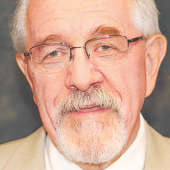- Christmas shopping is done, presents wrapped, strings attached? (12/14/16)
- Cecil is dead and human lives are threatened every day (8/12/15)
- As state flags go, Nebraska's ranks 50th (7/8/15)
- When everything looks like a nail (4/29/15)
- Who remembers to coal slurry pipeline debate? (3/11/15)
- More revelations in Department of Corrections mess (12/17/14)
- The Legislature becomes more Republican (11/19/14)
Opinion
A legislative committee looks at tax breaks
Wednesday, August 6, 2014
Let's talk about the Tax Incentive Evaluation Committee and the monumental task it faces. I am sure some of you would rather watch paint dry or have a root canal. But stay with me here. I'll point out what's important.
This special legislative committee was created (Legislative Resolution 444) during the recent legislative session and assigned to come up with specific and measurable goals for evaluating each of six statewide tax incentives. The committee includes members of the Performance Audit Committee and the chair and vice-chair of both the Appropriations and Revenue Committees and one other lucky state senator chosen by the Legislature's Executive Board.
Still with me on this? It gets better. The committee recently held its first meeting and received a lecture and a 20-page report from the Pew Center on the States who are recognized experts in this matter. Several other think tanks have since offered their opinions and ideas. Jordan Yahiro of The Tax Foundation (since 1937) addressed the issue in a blog he writes for that organization. I will share some information from these sources with an apology upfront to any other groups who may also have an opinion.
This is important. The study will focus on six specific tax incentives: the Nebraska Advantage Act; the Nebraska Advantage Rural Development Act; the Nebraska Advantage Microenterprise Tax Credit Act; the Nebraska Advantage Research and Development Act; the Beginning Farmer Tax Credit Act; and the Angel Investment Tax Credit Act.
This is important. Times are a little less contentious than they were when Nebraskans first heard about tax incentives during the one-term tenure of Governor Kay Orr. It was called LB775 and that letter-number combination is still mumbled by some when tax incentives are mentioned. Officially known as the Employment and Investment Growth Act, it was (in 1987) one of the costliest subsidy packages ever seen in the U.S. It included property tax exemptions, sales tax refunds, and a reduced income tax rate for the wealthy.
Governor Orr -- who some argue lost re-election largely because of the tax measure she pushed so hard -- was pressured by corporate food giant ConAgra and its then-CEO Mike Harper, who threatened to move the company out of Nebraska if the measure didn't pass. The whole thing caused national attention and veteran lawmaker Sen. Ernie Chambers of Omaha offered an amendment to the bill to add the ConAgra corporate logo to the state flag. The amendment failed, but spoke volumes.
A decade ago, a group of high school students protested the 17-year-old measure and called for its repeal because of its negative effect on funding for public education. The act (that dreaded LB775) was replaced in 2005 with the Nebraska Advantage Act.
This is important. Yahiro points out that Nebraska has the 18th highest corporate income tax rate in the country at 7.81 percent. Iowa's 12 percent is the highest. North Dakota's 4.53 percent is the lowest. Six states -- Nevada, Ohio, South Dakota, Texas, Washington and Wyoming -- have no corporate income tax.
He suggests that Nebraska should be asking if there is a better way to achieve the goals of the tax incentive programs of increasing small business support, investment, quality jobs, and retention of graduates and businesses as well as helping economically depressed rural areas. Eliminating the tax credits and broadening the corporate tax base is an option to be seriously considered by lawmakers, he said.
This is important. Robert Zahradnik of Pew urged the committee to consider whether the tax incentive is an effective approach to achieving its goals. Like all state budget decisions, the Legislature has to look at trade-offs, he said. A dollar spent on an incentive is a dollar that can't be spent on state services or to fund general tax cuts. The state must consider the economic effects of the trade-offs.
This is important. The Tax Incentive Evaluation Committee has been tasked with: setting specific and measurable goals for each of the six incentives; developing a process for regular evaluation of the incentives; determining who should conduct the evaluations and which methods to use; how often they should be conducted; proposing legislation for ongoing evaluations. They are also to issue a report to the Legislature's Executive Board no later than December 15, 2014. That's just in time for a new governor and a new session of the Legislature --with as many as 17 new faces -- to make important decisions.
This is important. Talk to your senator or senatorial candidates and tell them you support a fair and honest evaluation AND a look at the available alternatives.

